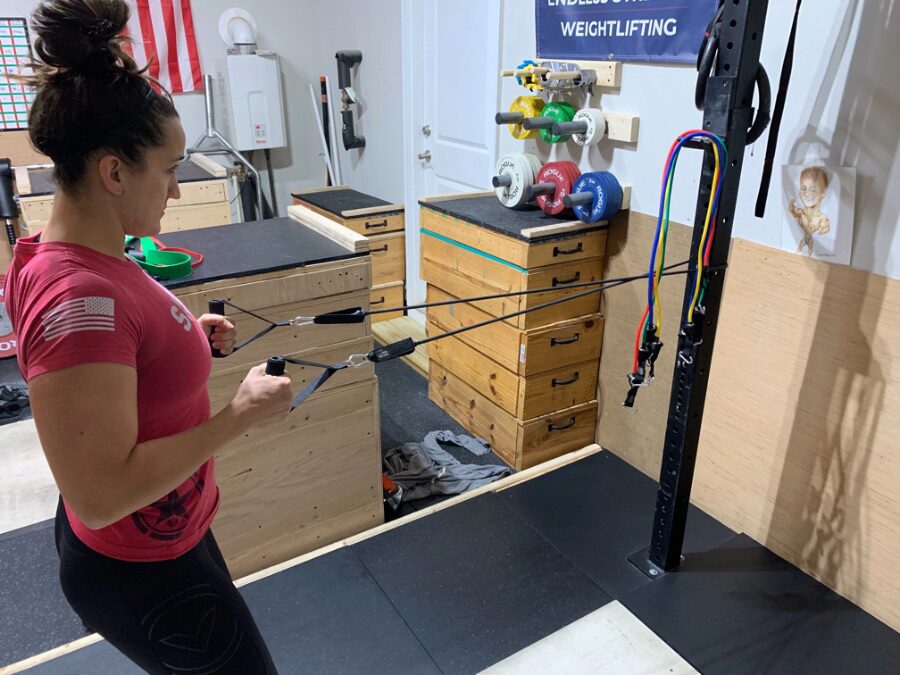
Dynamic strength training is a form of resistance training that focuses on improving strength, power, and explosiveness through dynamic, fast-paced movements. Unlike traditional strength training, which often involves slow and controlled movements, dynamic strength training emphasizes the speed of execution and the ability to generate force quickly. Here's a detailed overview:
Principles of Dynamic Strength Training
Speed and Power: Dynamic strength training prioritizes speed of movement and power production. Exercises are performed explosively, aiming to generate maximum force in minimal time.
Functional Movement Patterns: Exercises often mimic functional movements that replicate real-life activities or sports-specific actions. This helps improve performance in activities that require quick and powerful movements, such as sprinting, jumping, and throwing.
Variable Resistance: Dynamic strength training may incorporate equipment like resistance bands, chains, or medicine balls to add variability and challenge to the movements. These tools provide accommodating resistance, meaning the resistance increases as the force applied increases, which better mimics real-world movements.
Plyometric Training: Plyometric exercises, also known as "jump training," are commonly included in dynamic strength training programs. These exercises involve rapid stretching and contracting of muscles (stretch-shortening cycle) to improve explosive power and reactive strength.
Integration of Multiple Muscle Groups: Many dynamic strength exercises engage multiple muscle groups simultaneously, promoting coordination, balance, and overall functional strength.
Key Exercises and Techniques
Olympic Lifts: Exercises like the clean and jerk, snatch, and their variations are foundational to dynamic strength training. These lifts require explosive power and coordination to move heavy loads from the ground to overhead in one fluid motion.
Plyometric Exercises: Plyometric movements such as box jumps, depth jumps, and medicine ball throws are commonly used to enhance explosive power and reactive strength.
Ballistic Movements: Exercises like kettlebell swings, medicine ball slams, and explosive push-ups involve rapid acceleration and deceleration of the body or external resistance, improving power output and speed.
Speed Training: Incorporating sprints, agility drills, and ladder drills helps develop fast-twitch muscle fibers and improves speed, agility, and quickness.
Programming Considerations
Warm-Up: A thorough warm-up is crucial to prepare the body for dynamic movements. This may include dynamic stretches, mobility exercises, and light cardio to increase heart rate and blood flow to the muscles.
Progressive Overload: As with any strength training program, progressive overload is essential for continued improvement. This may involve increasing resistance, volume, or intensity over time to challenge the muscles and stimulate growth.
Recovery: Adequate rest and recovery are necessary to allow the muscles to repair and grow stronger. This may include incorporating rest days into the training schedule, prioritizing sleep, and practicing active recovery techniques such as foam rolling and stretching.
Periodization: Structuring the training program into different phases (e.g., hypertrophy, strength, power) helps optimize performance and prevent overtraining or plateaus.
Benefits of Dynamic Strength Training
Improved Athletic Performance: Dynamic strength training enhances explosive power, speed, agility, and coordination, leading to better performance in sports and other physical activities.
Increased Muscle Mass: Engaging in dynamic strength training can stimulate muscle growth and hypertrophy, particularly when combined with appropriate nutrition and recovery strategies.
Injury Prevention: Strengthening muscles, tendons, and ligaments through dynamic strength training can help prevent injuries by improving joint stability, mobility, and resilience.
Enhanced Metabolic Rate: High-intensity dynamic workouts can elevate metabolism and promote fat loss, making it an effective tool for weight management and body composition improvement.
Safety Considerations
Proper Form: Emphasize proper technique and form to reduce the risk of injury, especially when performing explosive movements with heavy loads.
Gradual Progression: Start with lighter weights and gradually increase intensity and load as strength and proficiency improve.
Individualization: Tailor exercises and training volume to individual fitness levels, goals, and limitations, taking into account factors like age, injury history, and mobility restrictions.
Listen to Your Body: Pay attention to signs of fatigue, pain, or overuse injuries, and modify workouts as needed to prevent injury and ensure long-term adherence to the program.
At FitnessFlows, we are passionate about helping you achieve your fitness goals and lead a healthier, happier life.